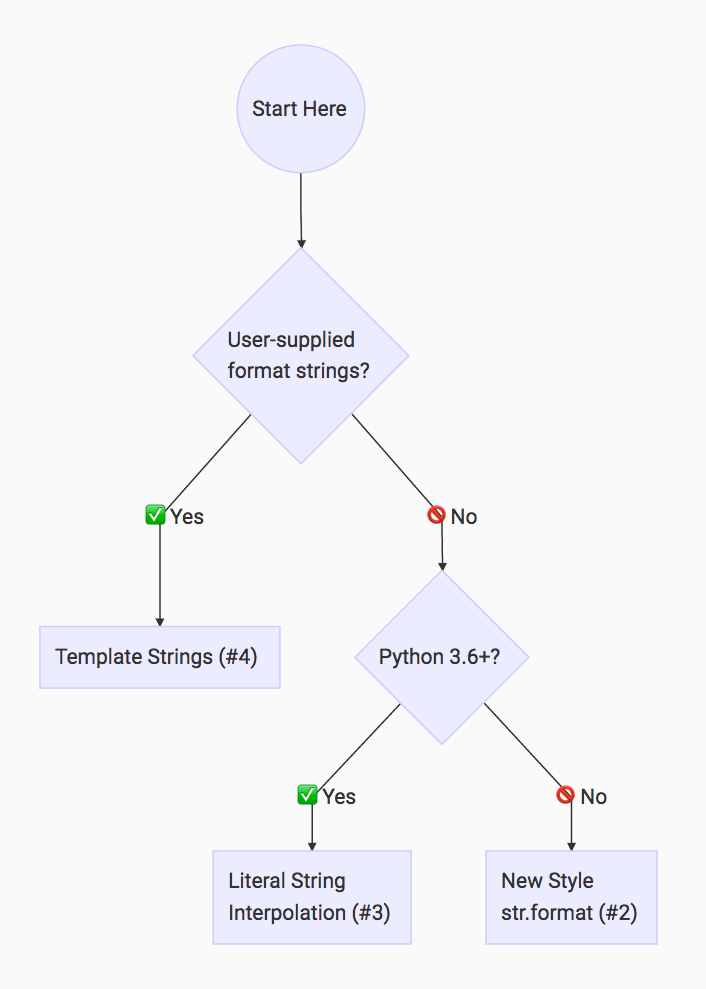String Formatting Best Practices
Introduction
介绍四种字符串格式化的方式:
- “Old Style“ (% Operator)
- “New Style” (str.format)
- f-Strings (Python 3.6+)
- Template Strings (Standard Library)
如何选择?

“Old Style”-不推荐
利用%操作符配合说明符,进行C风格的字符串格式化。
>>> 'Hello, %s' % name
"Hello, Bob"
Python3后该风格的格式化被新方式替代,不推荐使用。
“New Style”
通过str.format()的方式进行字符串格式化。
>>> 'Hello, {}'.format(name)
'Hello, Bob'
也可以根据名称指定位置。
>>> 'Hey {name}, there is a 0x{errno:x} error!'.format(
... name=name, errno=errno)
'Hey Bob, there is a 0xbadc0ffee error!'
说明符以:x 的形式指定。
优势是可以将格式化字符串和数值分开定义。
f-Strings
又称作格式化字符串字面量,以f 前缀作为标志。
>>> f'Hello, {name}!'
'Hello, Bob!'
f-string的一个优势是能够嵌入任意的python表达式。
Template Strings
Template Strings 由string标准库提供,它的功能没有上述的格式化方式强大,但是更安全,更适合格式化来自外部的字符串。
例如,要处理来自用户输入的字符串:
>>> # This is our super secret key:
>>> SECRET = 'this-is-a-secret'
>>> class Error:
... def __init__(self):
... pass
>>> # A malicious user can craft a format string that
>>> # can read data from the global namespace:
>>> user_input = '{error.__init__.__globals__[SECRET]}'
>>> # This allows them to exfiltrate sensitive information,
>>> # like the secret key:
>>> err = Error()
>>> user_input.format(error=err)
'this-is-a-secret'
上述代码,SECRET被泄漏,使用Template可以避免该风险。
>>> user_input = '${error.__init__.__globals__[SECRET]}'
>>> Template(user_input).substitute(error=err)
ValueError:
"Invalid placeholder in string: line 1, col 1"
此外Template Strings不支持格式说明符,需要先转换再替换。